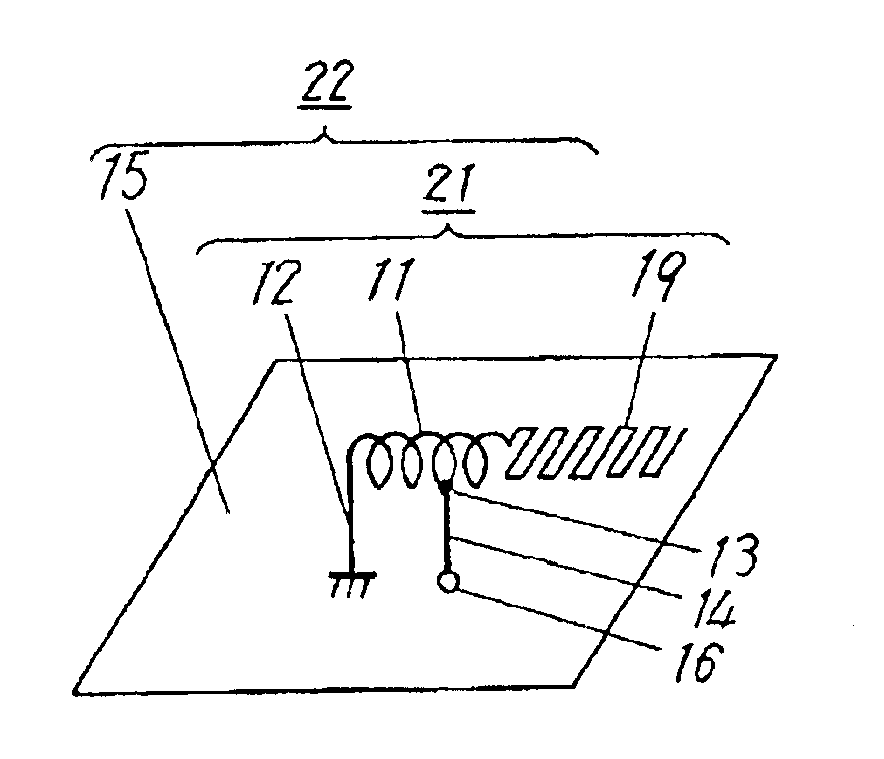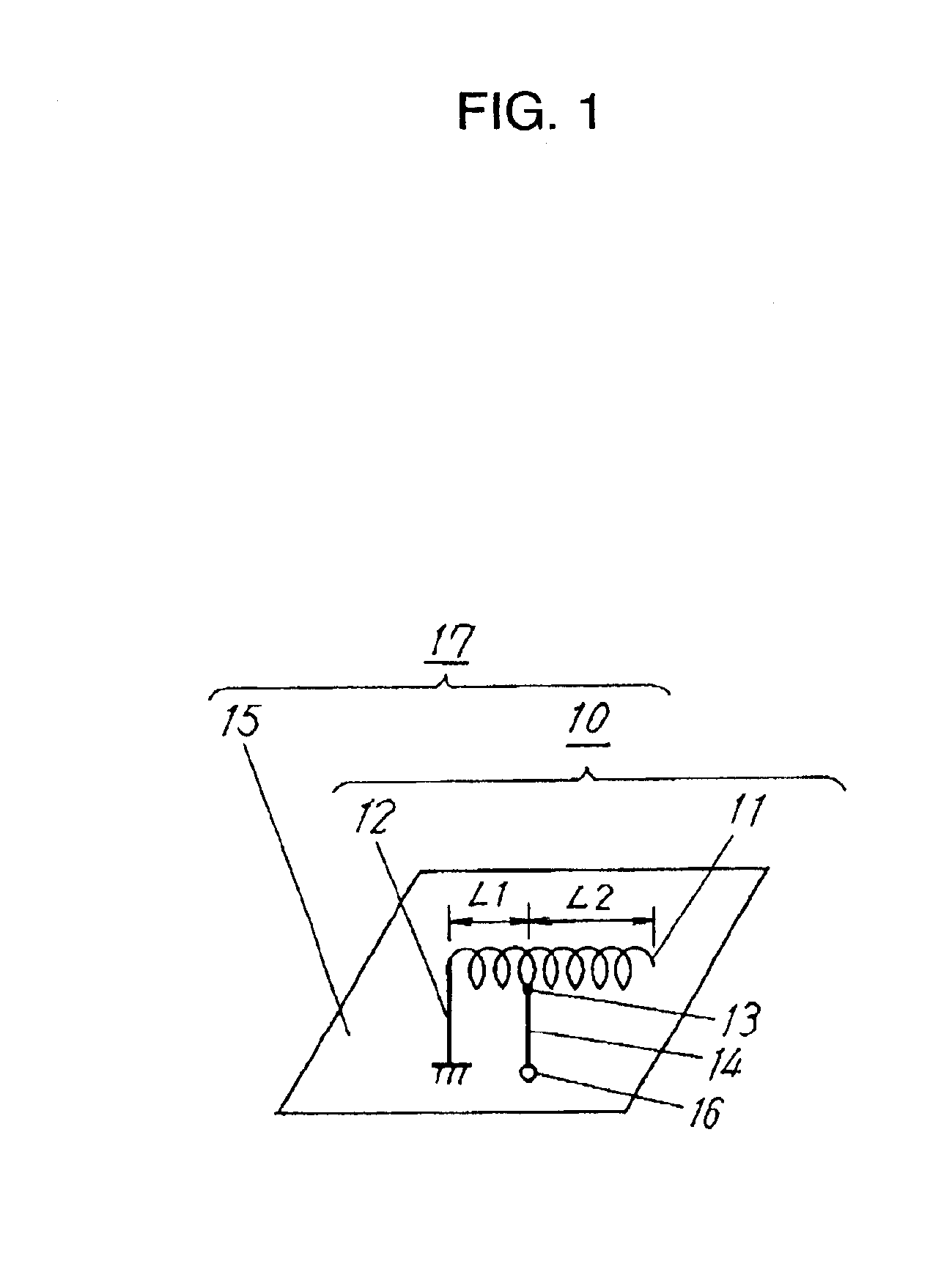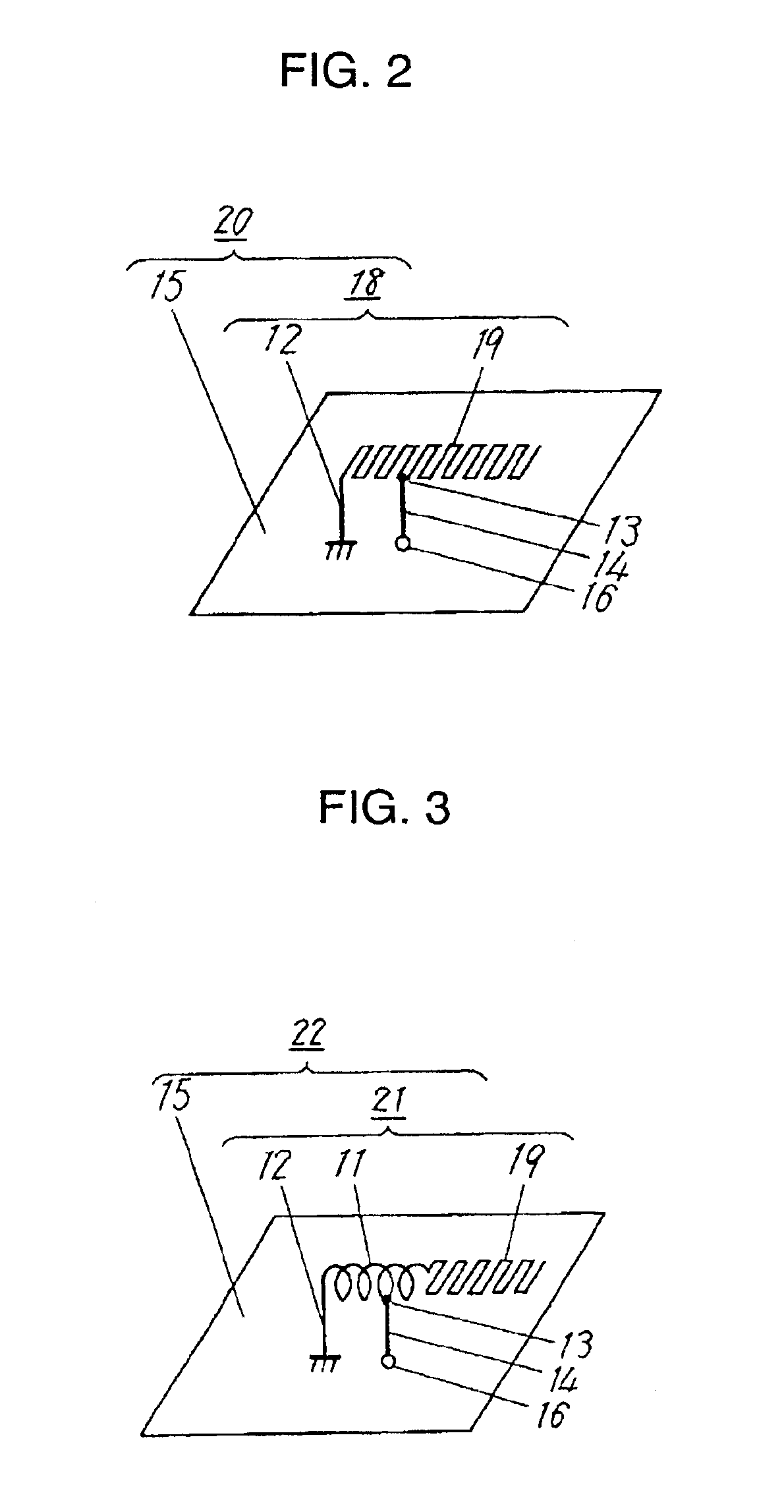Antenna and radio device using the same
a radio device and antenna technology, applied in the field of antennas, can solve problems such as the price reduction of portable telephones, and achieve the effects of wide bandwidth, easy matching impedance, and high sensitivity
- Summary
- Abstract
- Description
- Claims
- Application Information
AI Technical Summary
Benefits of technology
Problems solved by technology
Method used
Image
Examples
exemplary embodiment 1
[0054]FIG. 1 illustrates an antenna configuration in Exemplary Embodiment 1 of the present invention. In FIG. 1, antenna element 11 is an element made by forming into a spiral (hereinafter referred to as spiral element or spiral element section) a ribbon or wire of a conductor made of a conductive metal such as copper, copper alloy, aluminum alloy, or stainless steel alloy, or one of these metals plated with a conductive metal such as Au or Ni. Antenna element 11 has an electric length corresponding to a desired frequency band. One end of spiral element 11 is left open and the other end is grounded to grounding conductor plate 15 through stub 12. Feeding point 13 in proximity to stub 12 is connected to feeder line 14. Grounding conductor plate 15 is disposed in a manner such that it is in parallel with the central axis of the spiral of antenna element 11 keeping a predetermined spacing. Spiral element 11 is secured on grounding conductor plate 15 by a support member (not shown in FI...
exemplary embodiment 2
[0060]FIG. 2 illustrates an antenna configuration in Exemplary Embodiment 2 of the present invention. In FIG. 2, antenna 20 is configured in the same way as in above-described Exemplary Embodiment 1 with the exception that antenna element 19 of antenna main section 18 is composed of an antenna element that is meandrous in shape (hereinafter also referred to as meandrous element or meandrous element section).
[0061]By employing this configuration, it is possible to easily obtain a desired impedance characteristic in a desired frequency band by adjusting the distance between stub 12 and feeding point 13, the line width, length, pitch, etc., of meandrous element 19. Accordingly, it is possible to achieve a wider bandwidth and higher sensitivity as well as downsizing of the antenna. Furthermore, by the use of an antenna element that is meandrous in shape rather than a spiral antenna element used in Exemplary Embodiment 1, further thinning of antenna is also enabled.
exemplary embodiment 3
[0062]FIG. 3 illustrates an antenna configuration in Exemplary Embodiment 3 of the present invention. In FIG. 3, antenna 22 is configured in the same way as in above-described Exemplary Embodiment 1 and Exemplary Embodiment 2 with the exception that antenna main section 21 is composed of spiral element section 11 and meandrous element section 19.
[0063]By employing this configuration, it is possible to easily make a fine-tuning to obtain a desired impedance characteristic in a desired frequency band by adjusting the distance between stub 12 and feeding point 13, and the line width, length, pitch, etc., of spiral element section 11 and meandrous element section 19. Accordingly, it is possible to obtain wider bandwidth and higher sensitivity of the antenna with a higher accuracy. In this Exemplary Embodiment 3, a further flexible downsizing and low-profile design of an antenna are enabled by forming antenna element 21 with the combination of spiral element section 11 and meandrous elem...
PUM
 Login to View More
Login to View More Abstract
Description
Claims
Application Information
 Login to View More
Login to View More - R&D
- Intellectual Property
- Life Sciences
- Materials
- Tech Scout
- Unparalleled Data Quality
- Higher Quality Content
- 60% Fewer Hallucinations
Browse by: Latest US Patents, China's latest patents, Technical Efficacy Thesaurus, Application Domain, Technology Topic, Popular Technical Reports.
© 2025 PatSnap. All rights reserved.Legal|Privacy policy|Modern Slavery Act Transparency Statement|Sitemap|About US| Contact US: help@patsnap.com



